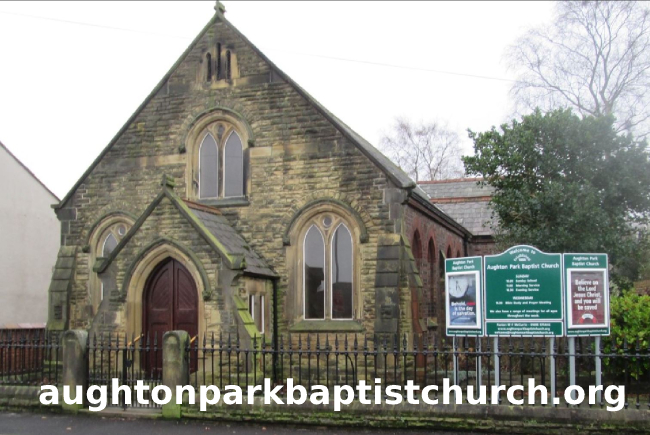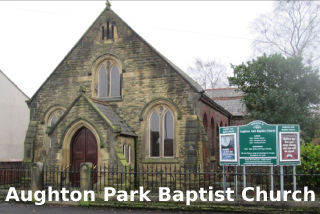Report by Kate Hurst, Ormskirk and District Family History Society
Plague is probably not an illness that we consider much today. We might read about it in history books, or learn about it briefly at school, and maybe even connect it with the Great Plague of 1665, which was followed by the Great Fire of London a year later, but three and a half centuries ago, it was just as much of a problem in the north-west of England.
But what has the plague got to do with Ormskirk?
If you walk up the road now known as Tower Hill, you’ll see an attractive stone cottage, lying between Taylor Avenue and Edgley Drive. A brief glance at the date stone over the door tells you that the house dates from around 1690; above the date is carved the letter G over the letters H and A (representing the initials of the builders) but above that is a curious inscription: 'God’s Providence is our Inheritance'.
This cottage - known as God’s Providence - is said to have been the only household in Ormskirk that was not affected by the plague that swept through the town in the 1650s; both the cottage and the inscription were mentioned when the Victoria County History of Lancashire was published in 1907 . . . and it was already over two hundred years old then!
Two centuries is a long period of time to try to trace the existence of a building; the well-known 1609 map of Ormskirk was too old to include the cottage, but a Ordnance Survey map of the town was drawn up in about 1890, and that did include God’s Providence, but street names have changed over time. The people who lived locally in 1890 would have said that God’s Providence was on Tank Lane (the old name for Tower Hill), and the 1881 census shows that it was home to sixty-two year old William Dandy, whilst also supplying the more formal street address as 3, Tank Lane.
More than a generation earlier, the compilers of another Ordnance Survey map - the 1845 edition - had been at work. At this point you step further back into Ormskirk’s past; although it was not named, a house of the correct size with what looks like a garden to the back is shown, and the adjoining road was called Tinkler’s Hill Lane, but there’s a twist in this story - this cottage isn’t the only one in the north-west of England to have been given that name! In 1909, Lieut.-Colonel Fishwick and the Rev. P.H. Ditchfield edited the second volume of a series called Memorials of Old Lancashire; just like the Victoria County History had done two years earlier, they mentioned this cottage on Tinkler’s Hill, but added that 'God’s Providence Cottages' on Scarth Hill, now pulled down” had once existed, not too far away; this set of buildings dated from 1691, featured different initials and a slight variation of inscription: 'Surely God’s Providence is our Inheritance'. And if that wasn’t coincidence enough, on 26 June 1865, a newspaper called the Morning Post made reference to a novel called - naturally - God’s Providence; written by a Mrs. Linnaeus Banks, it was about “the famous house in the old city of Chester where the plague was stayed”. If your first instinct is to think that Mrs. Banks had taken inspiration from the cottage in Ormskirk, and used a bit of poetic license to disguise its location, you may be surprised to know that the reality is even more strange. When a house on Watergate Street, in Chester was built in 1652, its owner had those same words - 'God’s Providence is mine inheritance' carved into one of the wooden beams.
Mirroring the story of the Ormskirk house almost exactly, it is thought that the inhabitants of the house that originally stood on the site had been the only household to escape the 1647-48 plague that killed 2000 people in Chester. Our modern logic might well conclude that the original house could have been destroyed deliberately (by burning or other means) to help to kill the infection. You could almost call it an architectural trend.
Ormskirk may not have been a particularly big place in the 1650s - although you may like to note that it managed to accommodate twenty-nine Roman Catholics in 1678 (a time in history when being anything other than Anglican marked you out for persecution) - but that doesn’t mean that its inhabitants would have feared the plague any less than any other community.
The late Dr. Mona Duggan’s book 'Ormskirk: A History' shows that worried residents took a petition to the local was Quarter Sessions. They felt that the plague was causing serious problems for Ormskirk market: “by reason of this contagion, the markets and all manner of trading amongst us (the only subsistence of ye most part of ye town) is interrupted and stopped”. If a market town couldn’t trade, it wouldn’t be long before the local economy suffered - after all, who would want to mingle amongst the stalls when the plague was a very real danger? Perhaps that is why another similar petition was presented, giving the names of people who hadn’t paid to have their rooms cleaned; it could have been seen as a public health issue.
There were positive stories in this time of fear. In 1649, the court at Ormskirk was informed that Dorothy Standish (a widow) had been quarantined with her five children, away from their home. Like many people, Dorothy must have stored food for leaner months and because she could not get to her house, anything edible had perished, leaving her with nothing to eat. On hearing this, the court was moved to collect money that could be donated to anyone in the parish who had suffered during the outbreak of plague, including Dorothy.
To return to religious persecution, it’s worth noting that Catholics weren’t the only 'minority' religion who were determined to practice their faith locally. The date stone on God’s Providence Cottage was apparently carved in 1690, and H. Padfield’s History of Ormskirk (1963) speculated that it was “probably a Quaker family, being spared the ravages of the plague, who later built a small house on Tower Hill”. The arrangement of the initials outside the cottage would certainly tie in with a marriage that was recorded at St. Peter and St. Paul, Ormskirk on 11 February 1681 between Henry Gill of Aughton and Alice Sourbutts of Ormskirk parish; the English Civil War and the subsequent Commonwealth period led to huge gaps in existing parish records, perhaps due to the conflict and perhaps also because the Commonwealth government are said to have disagreed with the idea of church weddings and christenings and favoured what we would now call civil marriages.
An Alice Gill, wife of Henry, of Scarisbrick was buried at Ormskirk in 1726, about twenty one months before the funeral of a matching Henry, from Scarisbrick, but whether or not these people were linked to God’s Providence Cottage is not yet certain. As is often the case when a mystery needs to be solved, records at the Lancashire Archives suggests that neither the Henry Gill who died in 1728 nor the Alice Gill who died in 1726 made a will before their deaths.
It is known that Quaker records from Bickerstaffe exist from the seventeenth century onwards, so these records (which have been published by Ormskirk and District Family History Society) may yet hold the answer...
The cottage is now for sale with Ormskirk estate agents Ian Anthony of Church St.; for more click here: http://www.iananthonyestates.co.uk/m...D=100829005569
|
|
||||||
|
WANTED: YOUR NEWS AND STORIES FOR ORMSKIRK
Phone / Txt Roger on 0754 3955 841 Email local news to us including image(s) ormskirk@qlocal.co.uk Follow / Report to us on Twitter @QlocalOrmskirk
WANTED: YOUR NEWS AND STORIES FOR ORMSKIRK
Phone / Txt Roger on 0754 3955 841 Email local news to us including image(s) ormskirk@qlocal.co.uk Follow / Report to us on Twitter @QlocalOrmskirk 

Check Todays Deals on Ebay.co.uk Your Comments:
Custom Search

|
You are in:
UK /
Ormskirk / North West
Find any Town in the UK, or Use UK map Local Google MAP for Ormskirk Check Todays Deals On Amazon.co.uk Check Todays Deals on Ebay.co.uk 



Qlocal Supports Woodlands Animal Sanctuary 

 Be Seen - Advertise on Qlocal Corporate Sponsors
Southport Piano and Music Academy Washroom Services Maximum Grounds Maintenance Southport Garden Services Ormskirk Garden Services Sanitary Bins Nappy Bins & Waste Disposal Confidential Shredding Services Legionella Risk Testing London Washroom Services Croydon Washroom Services Hounslow Washroom Services Wandsworth Washroom Services Havering Washroom Services Sanitary Bins London Clinical Waste London General Waste London Legionella Testing London Shredding London Tatoo Waste London Preston Bird Control Blackpool Bird Control
UK, Local Online News Community, Forums, Chats, For Sale, Classified, Offers, Vouchers, Events, Motors Sale, Property For Sale Rent, Jobs, Hotels, Taxi, Restaurants, Pubs, Clubs, Pictures, Sports, Charities, Lost Found
ormskirk,
ormskirk News,
|
|||||
|
|
|
|







 Reply With Quote
Reply With Quote

